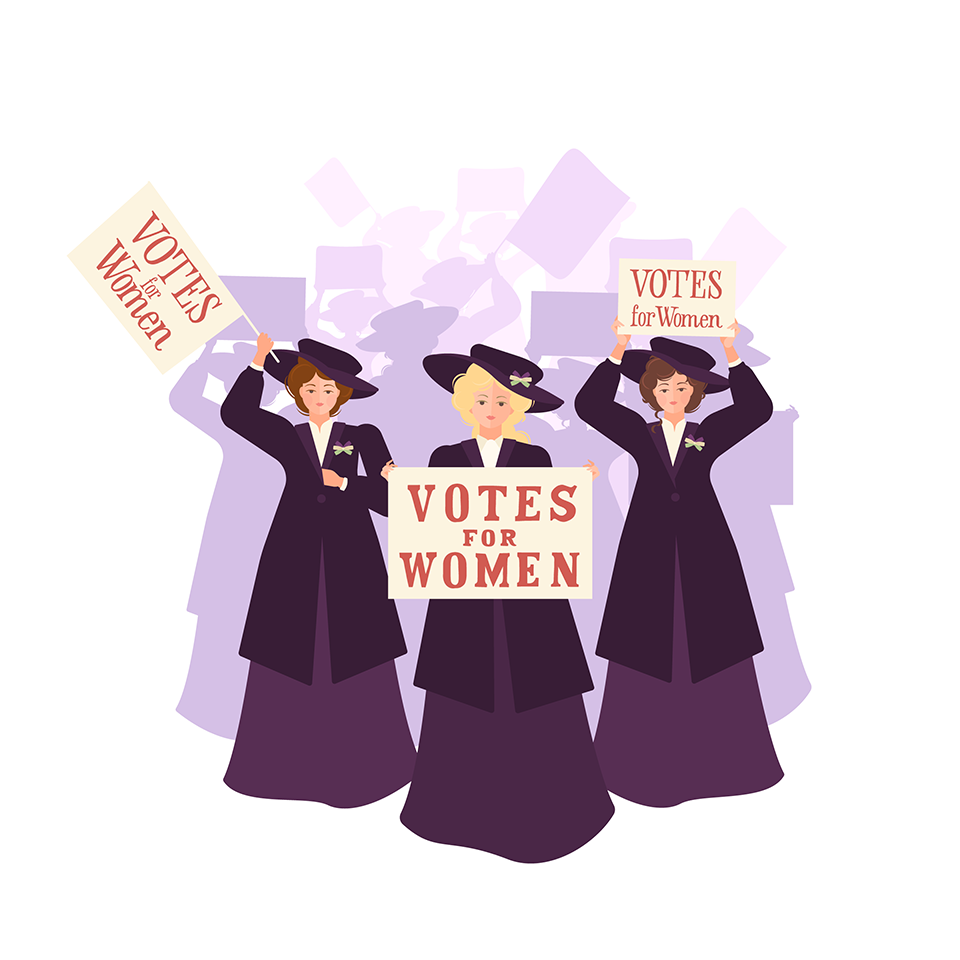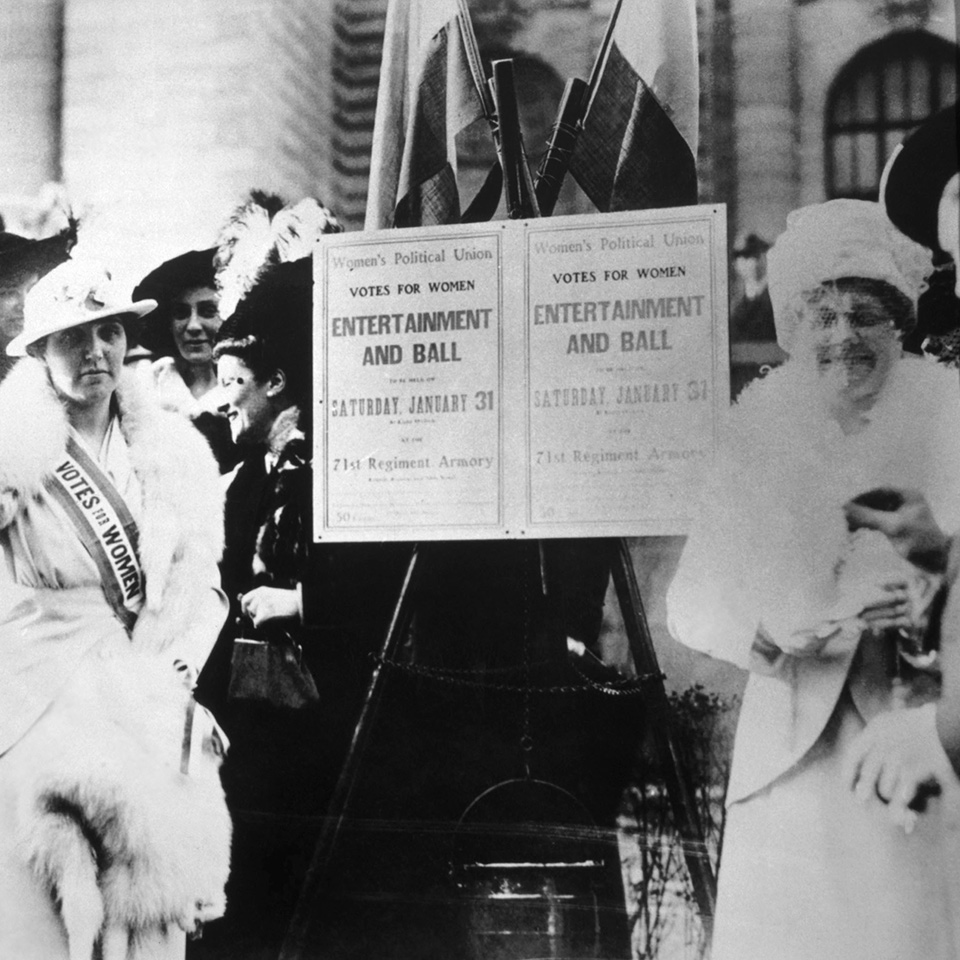The Suffragettes stand out as a pivotal force in the battle for women's rights. In this article, we look at who the Suffragettes were, how the movement originated, and the key figures who spearheaded this transformative cause.
Jump to:

Who Were the Suffragettes?
The Suffragettes were a militant women’s organisation campaigning for the right to vote for women in early 20th century Britain. They were led by a woman named Emmeline Pankhurst and her daughters, Christabel and Sylvia. Emmeline had founded the Women's Social and Political Union (WSPU) in 1903, and became a driving force behind the Suffragette cause.
How Were the Suffragettes Formed?
The Suffrage movement came about as a response to the denial of political rights to women. Its roots trace back to the mid-19th century, when a broader women’s Suffrage movement began advocating for political enfranchisement. However, it was when the Women's Social and Political Union (WSPU) was formed by Emmeline Pankhurst in 1903 that the Suffragette movement began. Only after moving to London in 1906 did the WSPU adopt militant tactics.
Recommended for you!
Best SellersGoals and Objectives - What did the Suffragettes do?
The primary goal of the Suffragettes was gaining the right for women to vote in political elections and referendums. In addition to securing voting rights, the Suffragettes advocated for open access to education, employment and public life for women. They published newspapers and gave speeches that condemned the unequal treatment of women across British society and culture. However, voting rights remained their primary objective, as Emmeline Pankhurst believed that if they succeeded at this, it would empower women to start pursuing other social reforms as well.
At first, the Suffragettes employed peaceful tactics like lobbying politicians, organising public marches, and holding rallies with speeches. However, these attempts failed to achieve any results, so they changed their approach. Under the slogan "Deeds Not Words", the Suffragettes moved to more disruptive forms of civil disobedience and protest. They chained themselves to buildings, slashed paintings, orchestrated massive protest marches, heckled political leaders during speeches, smashed windows, set fire to post boxes and even continued to protest when in prison via hunger strikes. This was all done in an attempt to force politicians to take action on voting reform.
The Women's Social and Political Union endorsed violence against property and officials, justifying these actions as the only way to convince men in power to grant them Suffrage. However, their drastic measures divided public opinion. Even though there were many men and women who supported the overall goal of women’s Suffrage, many felt uncomfortable with tactics that were breaking the law.
Emmeline Pankhurst and her daughter, Christabel, coordinated these aggressive strategies from their headquarters in London. Some of their local branches would smash shop windows in London’s West End and storm political meetings. But they weren’t afraid of the consequences and actually welcomed being arrested as it gave them a platform to speak out. In fact, they proudly wore the medals they received after being jailed for the cause.
By World War I, the pressure from the Suffragettes had made voting reform a priority. Politicians were still reluctant, but did finally pass laws granting the vote to women over 30 in 1918. Even though it was controversial at the time, it’s undeniable that their disruptive protests were effective in keeping Suffrage at the forefront of the national conversation, and helped to achieve their ultimate goal.

How Many Suffragettes Were There?
It’s hard to put a number on how many Suffragettes there were. However, historians estimate that there were between 2,000 to 5,000 women actively involved in the militant Suffragette movement during its peak from 1903 to 1914. The WSPU had around 2,000 paying members. There were also many non-paying members and supporters of the WSPU and groups like the Women's Freedom League.
However, the core group, who were willing to commit illegal acts and endure prison sentences, was smaller: likely only a few hundred women. Emmeline Pankhurst stated there were around 500 dedicated Suffragettes who were disciplined and sacrificed for the cause. Others participated only occasionally in marches and protests.
Aside from the actual group of Suffragettes, tens of thousands of British women supported extending voting rights to women. However, they would support the cause from afar, rather than getting involved in the illegal acts of protest.
Even though the Suffragette movement was centred around London, groups popped up around the country in cities like Manchester, Birmingham, Leeds, and Glasgow, and rallies and protests were routinely held. Despite being a minority, the Suffragettes effectively represented the women of Britain, who deserved equal rights.
The daring tactics and fierce determination of the Suffragettes were instrumental in securing voting rights for British women. If you want to learn more about this influential movement and the key figures behind it, check out our History of the Suffragettes Diploma Course for just £29 (save £98!)! The course covers the campaign from start to finish and explores how the Suffragette movement evolved, its major protests and events along the decades-long road to victory, and the profiles of the women who dedicated themselves to the struggle. Our in-depth course is perfect for anyone that’s fascinated by those bold women who fought for and won the right to vote.













